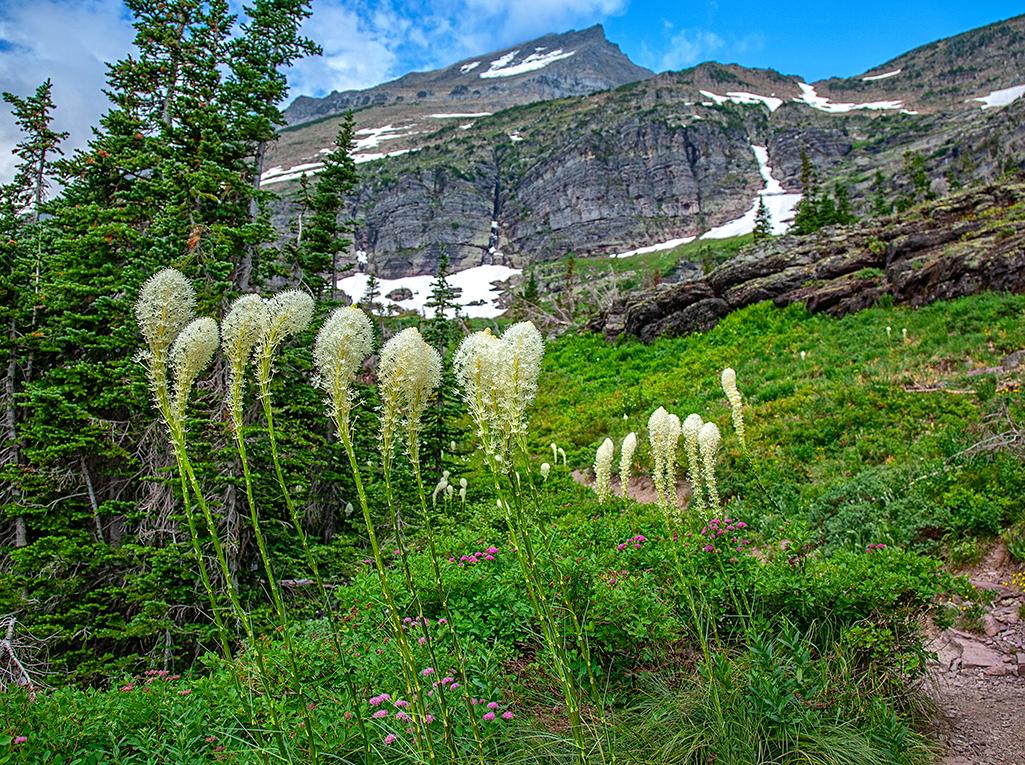
Beargrass seen along the Grinnell Glacier Trail, Glacier National Park / Rebecca Latson
There will never be any worries about running out of interesting National Park System tidbits for quizzes and trivia, so here is Quiz and Trivia #65. Test your knowledge to see how much you really know. You might surprise yourself, impress friends, family, and co-workers, and maybe even learn something new!
1. While touring the landscape along the route of the Lewis and Clark National Historic Trail, or perhaps hiking somewhere in Glacier or Mount Rainier national parks, you might encounter beargrass along the trail and in the meadows. True or False: Beargrass is a true grass.
a) True
b) False
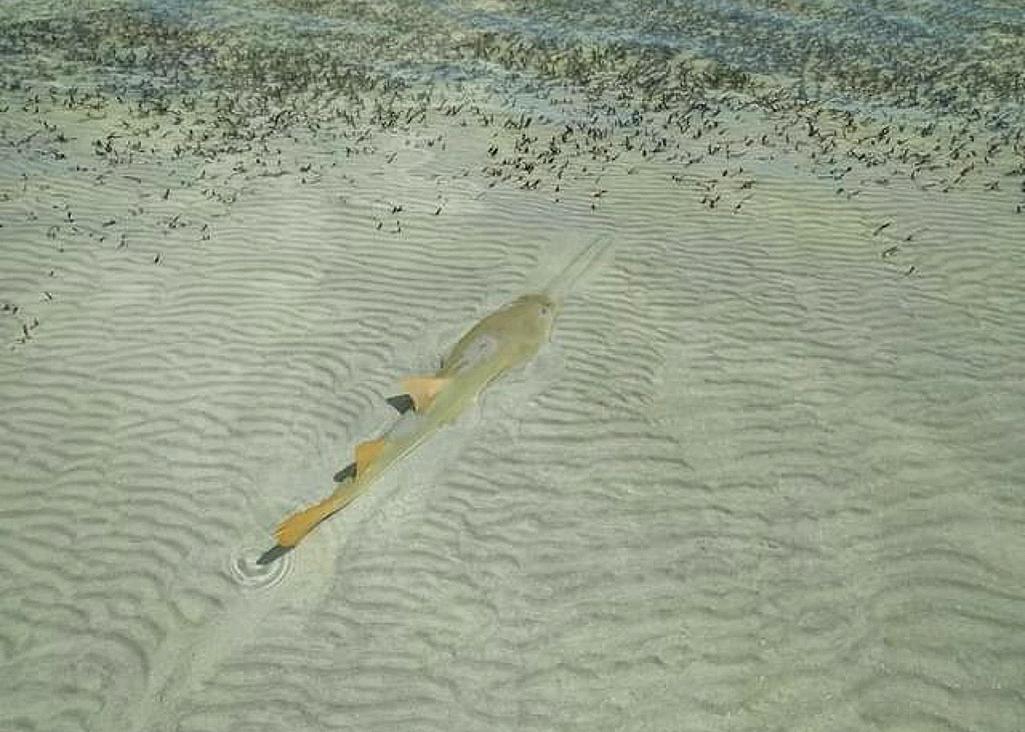
Smalltooth sawfish, Everglades National Park / NPS - Ryan Baer
2. True or False: the smalltooth sawfish is a species of shark.
a) True
b) False
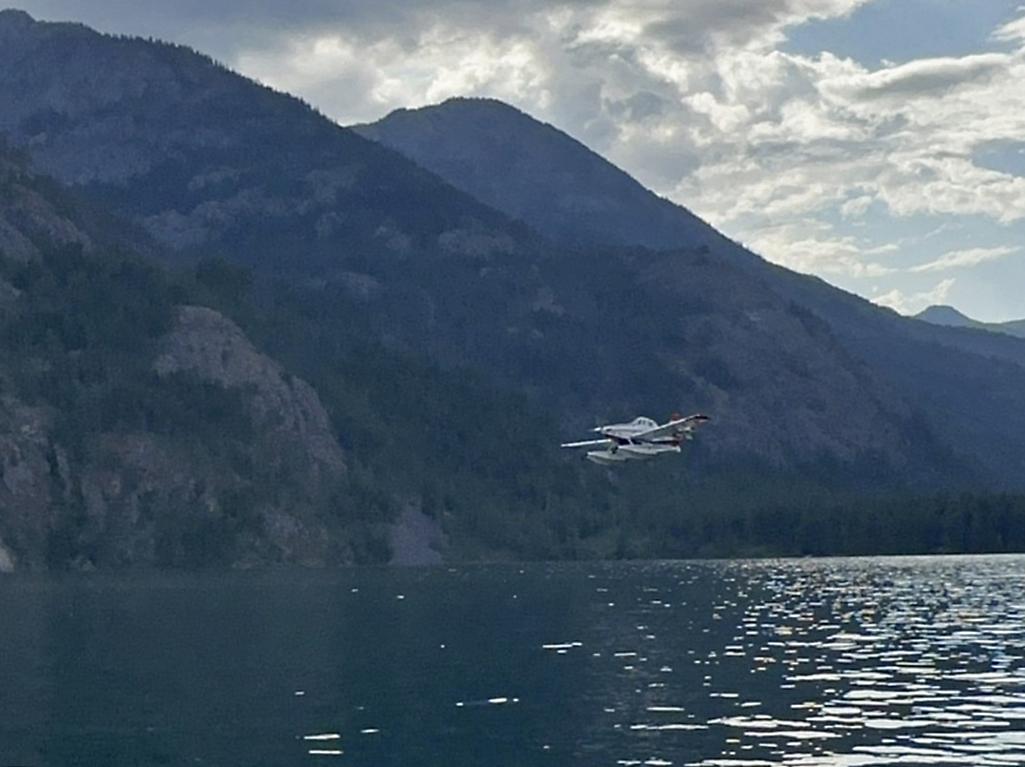
Air Tractor Fire Boss, North Cascades National Park Complex, NPS - Mitch Holmes
3. Summer is a time of wildfires, and this year North Cascades National Park has been having its share. You may have seen photos (or even seen in person) planes dumping water over the fire in an effort to extinguish the blaze. This image here is of a retrofitted Air Tractor 802 Fire Boss. Planes like this that dump water over a wildfire are known as ___.
a) Skimmers
b) Scoopers
c) Dumpers
d) Dousers

What makes these tracks at White Sands National Park? NPS - Alyssia M
4. Hike the white gypsum sands of White Sands National Park and you may very well see tracks like the ones in the image. Those tracks belong to a ___.
a) Scorpion
b) Kangaroo rat
c) Darkling beetle
d) Desert fox
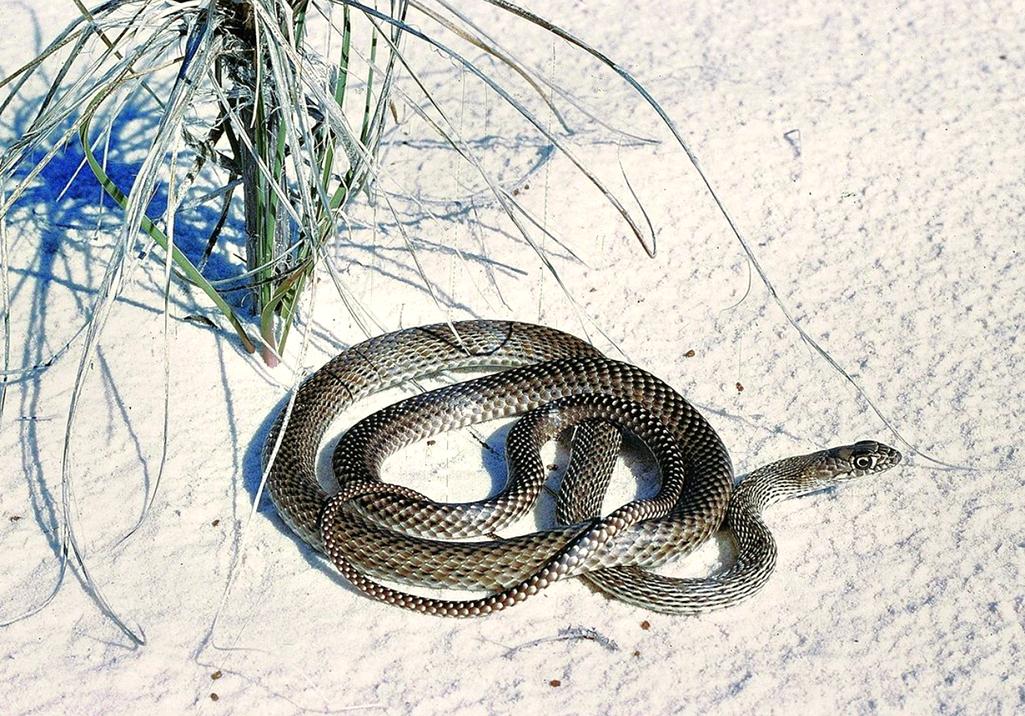
Western coachwhip snake, White Sands National Park / NPS
5. Let’s stick with White Sands a little longer. While hiking around in this national park, you might surprise (or be surprised by) a western coachwhip snake. This type of snake is known as a ___
a) Diurnal snake
b) Scary snake
c) Stick snake
d) Rope snake

More than just a pretty salmon-pink rock, Lake Clark National Park and Preserve / NPS
6. Lake Clark National Park and Preserve is not only famous for its brown bears and stunning scenery, but also for its archaeology. As a matter of fact, the image here may be a part of one of the oldest archaeological sites in the park. This salmon-pink rock is known as a ___.
a) Chert nodule
b) Hand axe
c) Microblade core
d) Hand scraper

What kind of wasp is this? / USFWS - Michael Schramm
7. Yikes! A close-up image of a stingy bug! This insect is known as a ___.
a) Mud dauber
b) Paper wasp
c) Thread-waisted wasp
d) Potter wasp
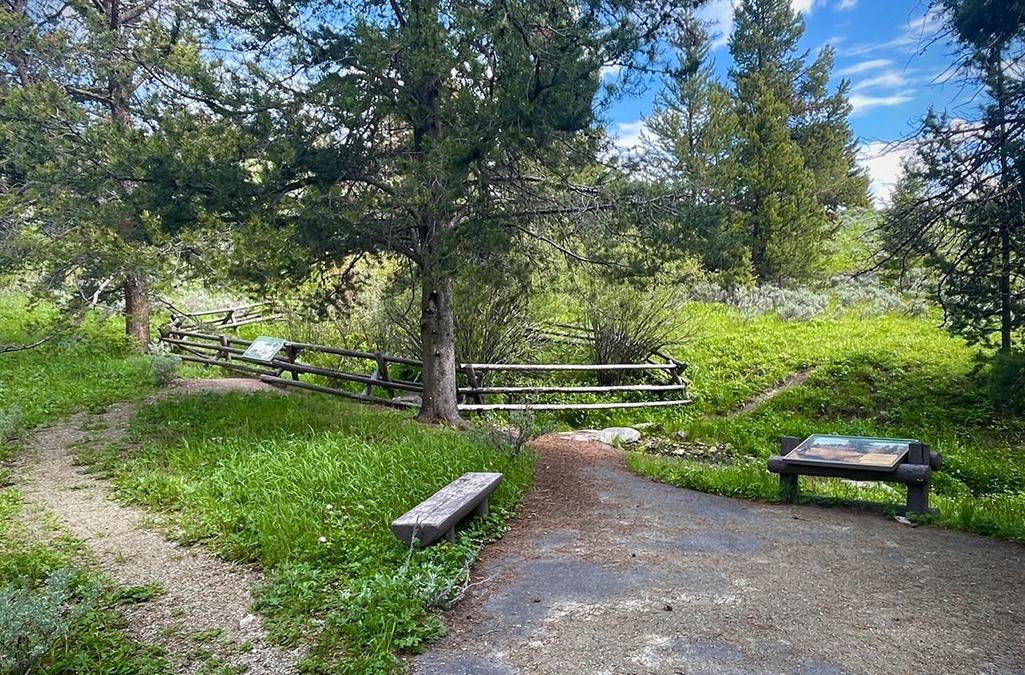
A small watery start to a much larger end, Lewis and Clark National Historic Trail / NPS - K Schlawin
8. The image of this fenced-in area near the crest of Lemhi Pass and the Continental Divide may be seen along the Lewis and Clark National Historic Trail. The fence surrounds a small spring that feeds Trail Creek. Trail Creek, in turn, joins with other tributaries to form the ___.
a) Missouri River
b) Columbia River
c) Snake River
d) Clearwater River
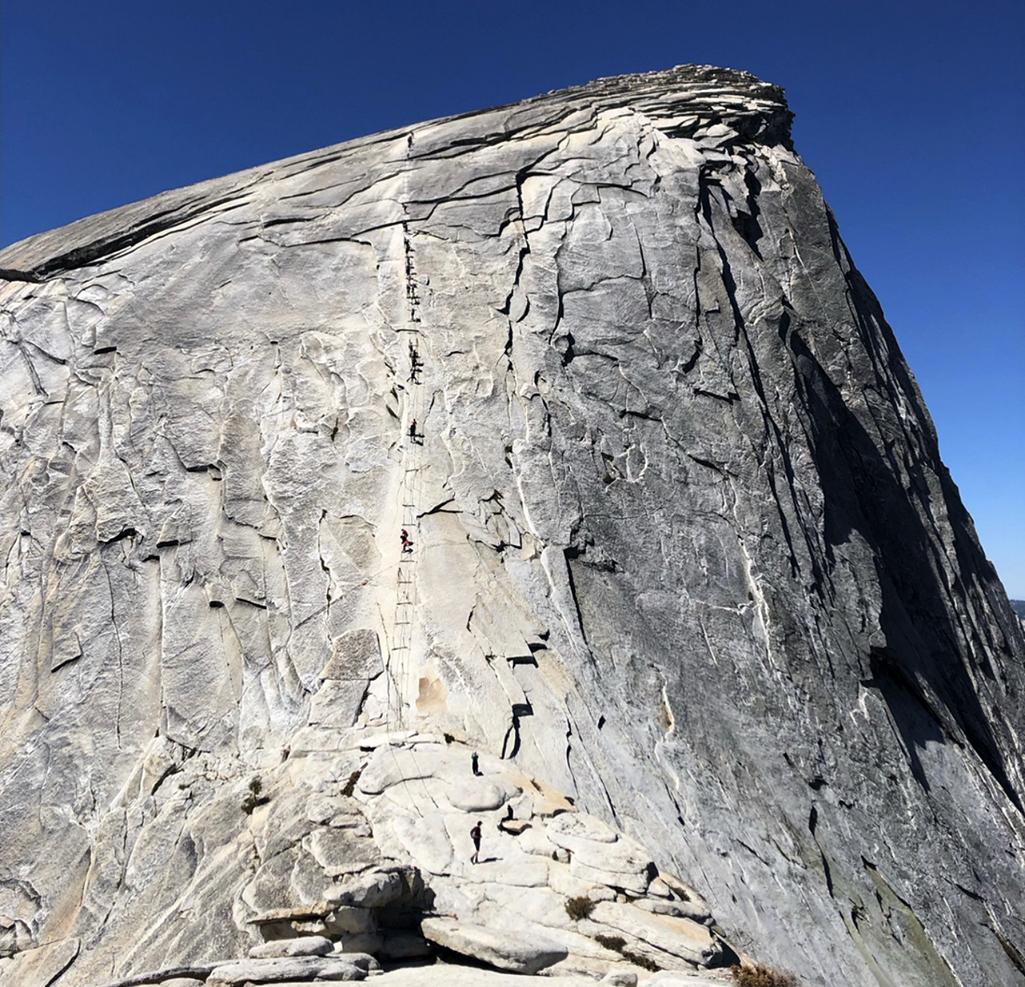
Humans aren't the only ones to have scaled Half Dome, Yosemite National Park / NPS
9. True or False: Foxes can climb Yosemite National Park’s Half Dome.
a) True
b) False
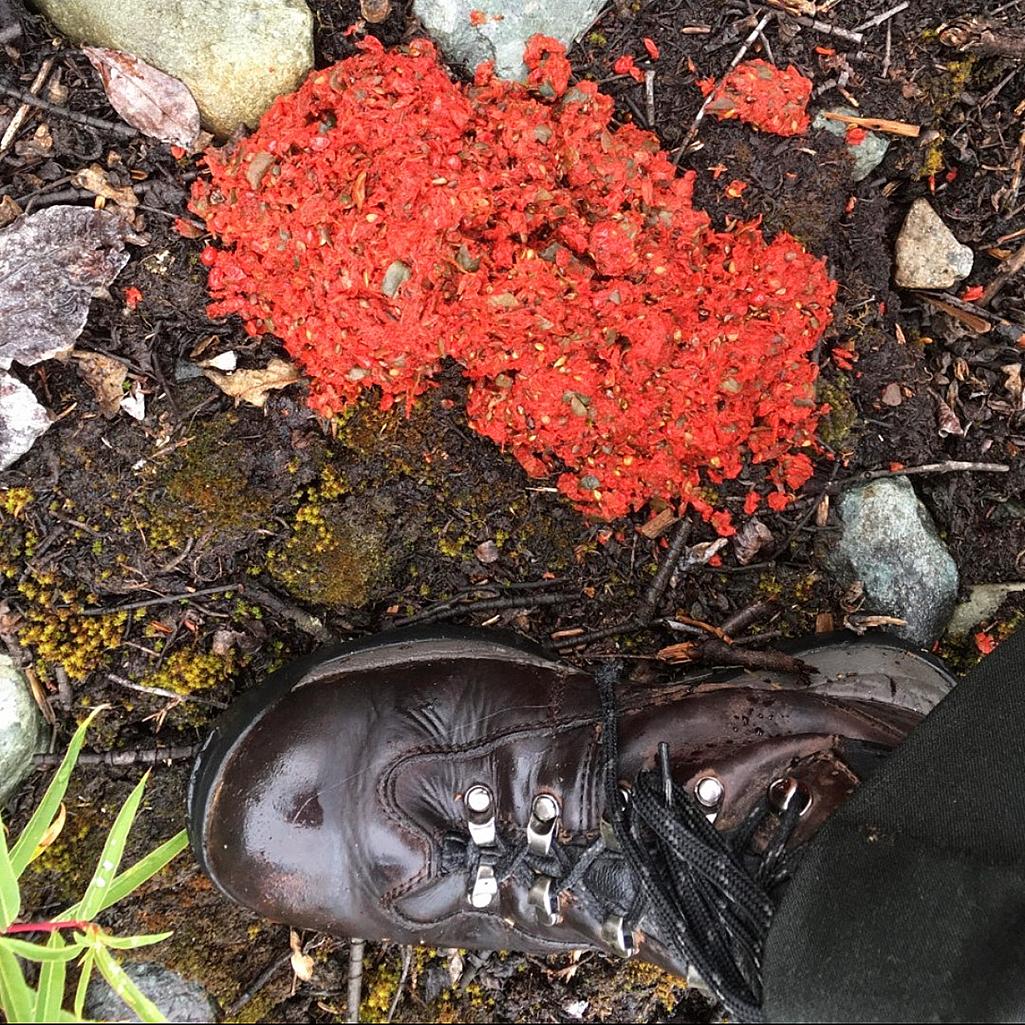
What animal left this red poop in the park? Wrangell-St. Elias National Park and Preserve / NPS - Maya Heubner
10. Yup, a photo of poop. But what kind of animal left this bright red poop?
a) Elk
b) Bear
c) Fox
d) Moose
Trivia
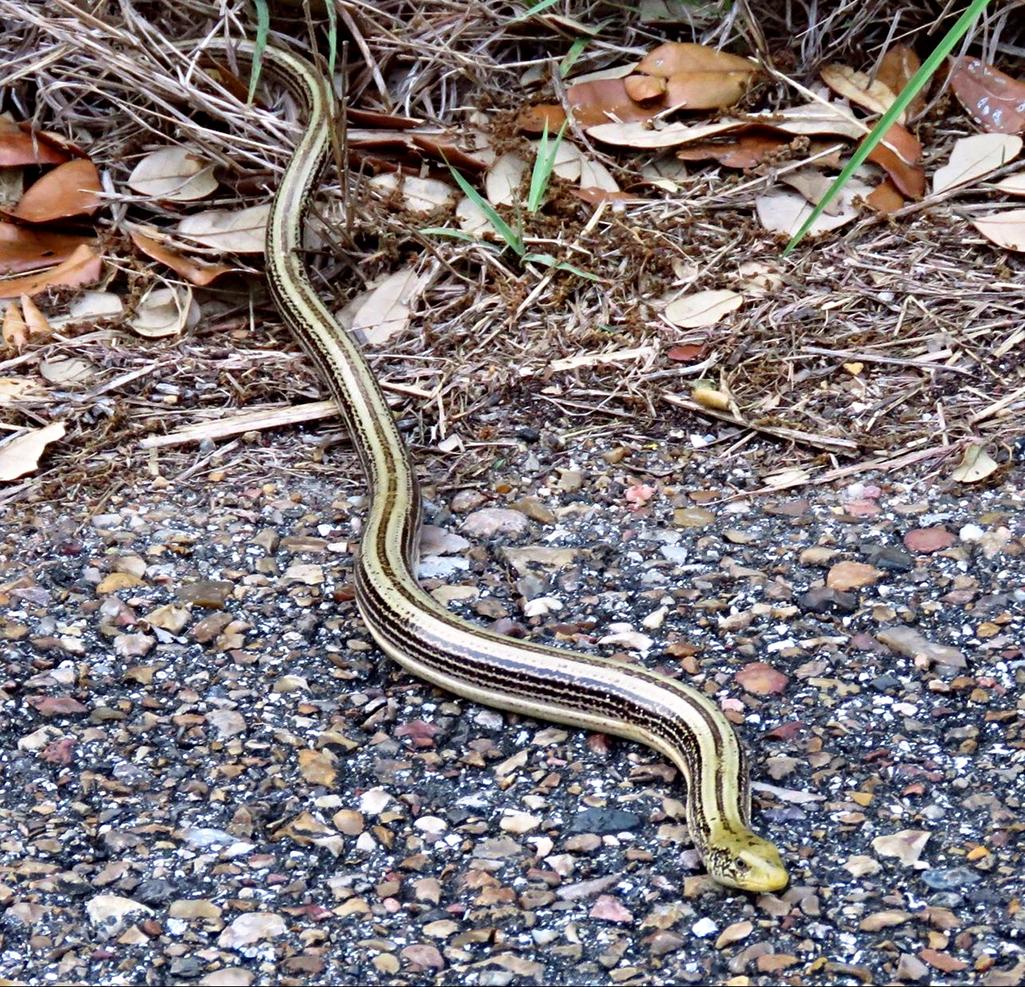
A slender glass lizard / USFWS - Craig McIntyre via Share The Experience
What you are looking at, here, is not a snake! It sure looks like one, though, doesn’t it? The western slender glass lizard is a legless reptile that is often confused for a snake. They get their name for their breakable nature: when grabbed, their tail will break away and they can actually snap it off without ever even being touched. That broken-off piece of tail still wriggles, making it a great distraction for a predator while the lizard makes its escape. You might see one of these legless lizards while hiking around Big Southfork National River and Recreation Area in Kentucky / Tennessee.

Lady Liberty shedding light on the evening, Statue of Liberty National Monument / NPS
Lady Liberty has lit the way to freedom for so many people over the decades, but did you know that “for 16 years, the Statue of Liberty was operated by the Light-House Board as America’s largest lighthouse?”
“Shortly before the statue’s dedication in October 1886, the U.S. Light-House Board and American Electric Manufacturing Co. installed a system of arc lights. The result was underwhelming and the lights were barely visible … Today, the National Park Service operates the Statue of Liberty, and the flame is lit externally by LED lights.”
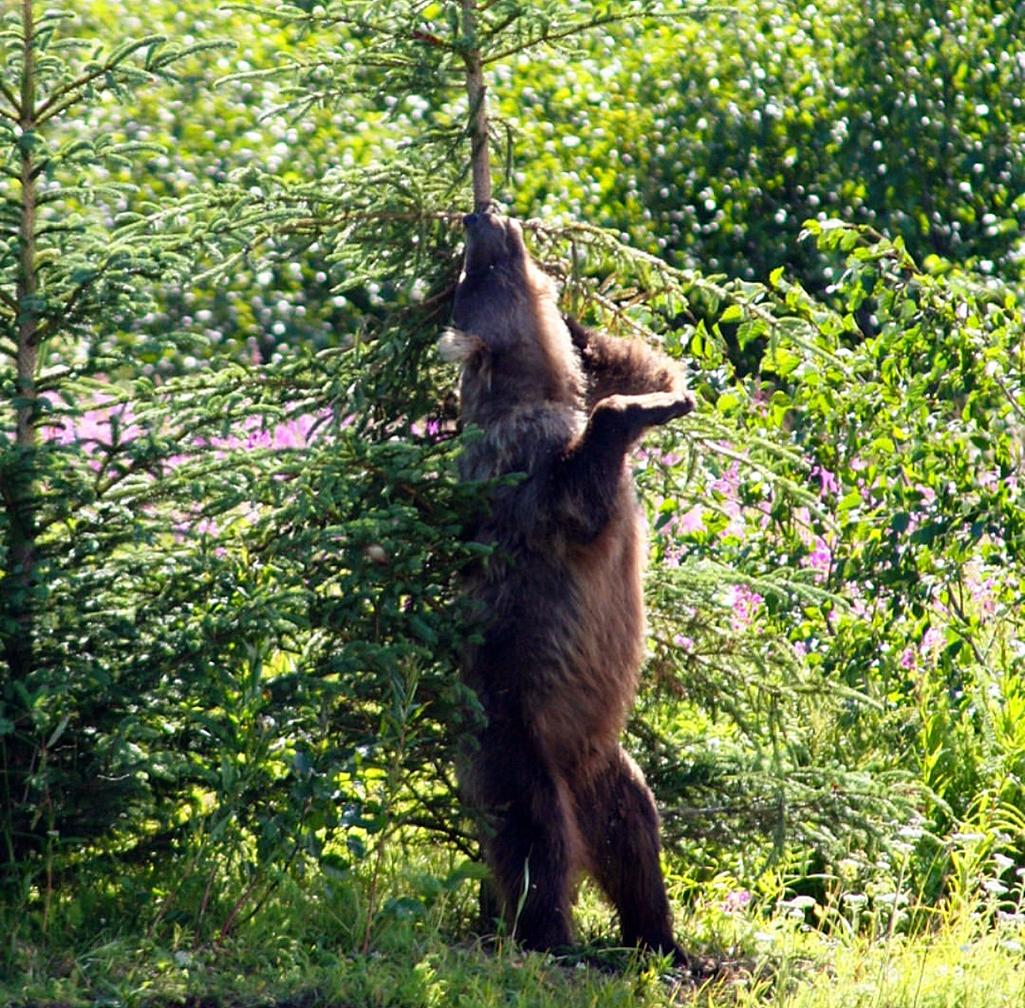
Getting a nice backscratch, Lake Clark National Park and Preserve / NPS - K. Jalone
Ahhhh. Who doesn’t like a good back scratch? “But bears rub against tree bark trying to do more than scratch an itch … In fact, various motives drive bears to shimmy and scratch against trees. On occasion, they use it as a means of communicating through scent, marking their territory. At other times, it serves the purpose of removing hair and alleviating hard-to-reach itches. But, vigorously rubbing against the side of a tree may confer yet another advantage: applying a natural tick repellent. … As bears wriggle against the bark, the tree scratching posts release resins and saps. These natural substances adhere to their fur and skin, displaying water-resistant properties and thus presenting a promising option as an effective tick repellent.”
Quiz Answers
1b False
Beargrass (Xerophyllum tenax) is not a grass. It’s a member of the corn lily family. According to the NPS, “[Beargrass] is a group of flowering perennial herbs native to the northern hemisphere. Beargrass can grow up to five feet in height with long and wiry, grass-like basal leaves at the base of the stalk and a cluster of small, dense white flowers at the top. The flower’s fragrance can vary – in some locations it can have a sweet smell, similar to lilacs, while in others it may have a musty-acid smell … For centuries, Native peoples have valued beargrass, using it for basketry and decoration, and roasted roots. And it’s always been a popular plant for the many animal species that use it for food or cover (bees, beetles, rodents, elk, bears).”
2b False
The smalltooth sawfish is a species of ray, with gill openings on the bottom of their body rather than on the side. These fish are most often found in Everglades National Park and according to the NPS, “Sawfish get their name from their distinct rostrum – a flat, long snout edged with teeth that looks like a saw.”
3a
Skimmers get their name from their ability to land on water and fill their tanks while moving. Skimmers “can pick up 860 gallons of water in 16 seconds!”
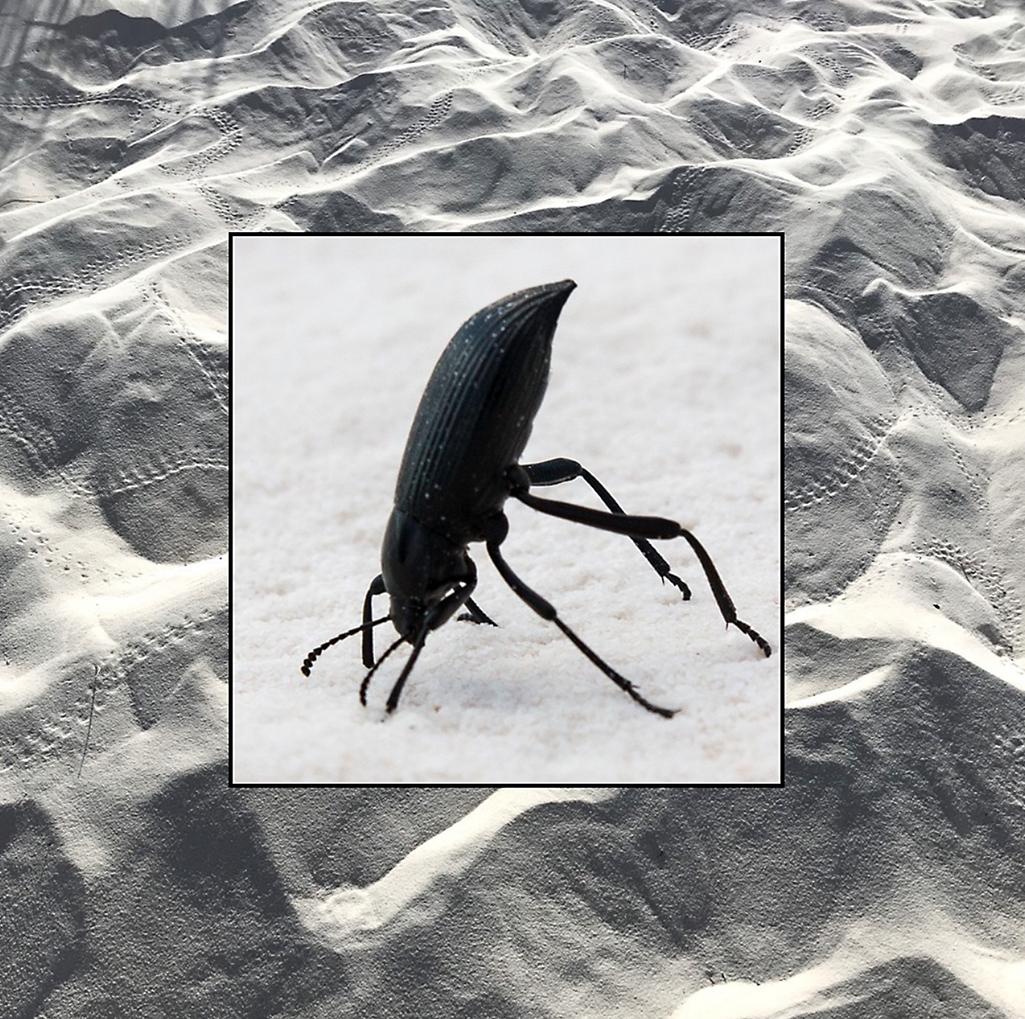
A darkling beetle and tracks in the sand, White Sands National Park / NPS - Alyssia M
4c
Darkling beetle tracks are some of the most common in White Sands National Park, and while most animals in the park are nocturnal, you might see this beetle during the day. While most animals are light-to-white to blend in with the environment, darkling beetles don’t worry about camouflage because they are a stinkbug, emitting a substance that smells like kerosene if a predator gets too close to it.
5a
According to the NPS, “Diurnal snakes, or snakes who are mostly active during the daytime, have developed eye lenses that block UV light from entering their eyes, which protect their eyes from damage … This filtration of UV light gives some diurnal snake species extra detail in their vision, which greatly benefits their hunting abilities.”
6c
What you see in the image in Question 6 is known as a “microblade core.” Flakes were stuck off this core to create microblades, “specialized stone blades at least twice as long as they are wide … Microblades appeared around the globe among disparate peoples and are associated with the invention of complex tools. In the case of the microblades struck from this core, they were likely hafted into the sides of antler projectiles used for spearfishing. To read more about this, click here.
7d
According to the U.S. Fish and Wildlife Service, “The potter wasp builds its nest like a perfect little pot to raise its young … It then finds and paralyzes caterpillars and places them into the pot, seals it shut, and leaves them to be eaten by the larva when it hatches. The larva grows and emerges from the pot as an adult …” You may very well see a potter wasp while hiking along a trail in Great Smoky Mountains National Park.
8a
That small, fenced-in spring is the source for Trail Creek, which flows down the eastern slope of Lemhi Pass in Idaho and “joins the waters of hundreds of other small tributaries to form the Missouri River … Private Hugh McNeal [of Lewis and Clark’s Corps of Discovery] straddled Trail Creek about two miles downstream from the spring and ‘thanked his god that he had lived to bestride the mighty & heretofore deemed endless Missouri,’ according to Meriwether Lewis’ journal entry August 12, 1805.”
9b False
No, fox cannot climb Half Dome (well, there's no evidence for that, anyway). On the other hand, if you read the Traveler’s recent article, you’ll have discovered that a black bear actually scaled this iconic granite outcrop. Bears are very good climbers. It also reinforces the need to be “Bear Aware” everywhere!
10b
During the fall at Wrangell-St. Elias National Park and Preserve, “bears gorge on red soapberries, one of the best sources of protein available to them” and are especially important when fattening up for the winter. FYI, soapberries can be eaten by humans, but they got the name “soapberry” for a reason. Native peoples have used soapberries for colds and sore throats and even a tea (mooseberry tea).


